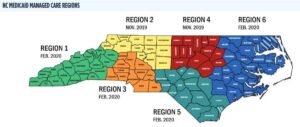RALEIGH, NC – With the potential for winter weather looming, North Carolina Department of Transportation (NCDOT) crews are once again working to prepare roadways by applying salt brine—a proactive measure aimed at reducing ice accumulation and improving travel safety.
Doug McNeal, NCDOT engineer overseeing maintenance across several counties, including Durham, Wake, Person, Granville, Vance, Warren, and Franklin, confirmed that crews began brining efforts late Sunday night as rain subsided. Their primary focus was on major highways such as Interstates 40 and 540, key transportation arteries in the region.
“We were actually able to start after dark last night and continue throughout the night,” McNeal stated. “However, as temperatures drop significantly overnight, applying brine may no longer be effective.”
Challenges of Cold Weather Application
NCDOT officials are closely monitoring both road surface temperatures and air temperatures, which play a crucial role in determining the effectiveness of salt brine treatment. According to McNeal, traditional salt brine works efficiently down to 18 degrees Fahrenheit, but colder road surfaces can create hazardous conditions despite air temperatures being above freezing.
“Even if it’s 30 degrees outside, road surfaces can be much colder, which could lead to slippery conditions if brine is applied improperly,” McNeal explained.
This latest round of winter weather preparations follows an earlier event this month that prompted NCDOT crews to resume snow response operations after nearly three snow-free years in the region.
Enhanced Equipment and Resources
With additional resources and improved equipment, McNeal noted that NCDOT has been able to increase the efficiency of their brine operations, ensuring better coverage within shorter timeframes.
“We were able to bring in more equipment this round that we didn’t have a few years ago,” he said. “This allows us to provide better treatment coverage and improve response times.”
Despite the light snowfall in Raleigh earlier this month, NCDOT teams faced greater challenges in northern parts of the state.
“My team goes all the way up into Virginia,” McNeal shared. “It took us a few days to fully clear certain areas due to persistent cold spots that proved difficult to manage.”
Safety Recommendations for Drivers
As North Carolina braces for possible snow and ice, McNeal urges residents to prioritize safety by staying off the roads whenever possible.
“In the last event, we had more people on the roads than expected when the snow started falling,” he said. “This not only causes delays in our operations but also puts drivers and our crews at risk.”
While essential travel may be unavoidable for some, NCDOT recommends that motorists monitor weather updates, avoid unnecessary trips, and exercise extreme caution if driving in winter conditions becomes necessary.
Stay Informed with the Bull City Citizen
For the latest updates on winter weather preparations, road conditions, and travel advisories, visit The Bull City Citizen, your trusted source for comprehensive local news and public safety information. Stay prepared and stay safe by following official recommendations from NCDOT and emergency management officials.













